
- Topics 1531
- Industrial 59
- Troubleshooting Guides 31
- Restaurant Management 140
- Bar Management 66
- Catering Tips 38
- Bakery Management 47
- Food Trucks & Concessions 47
- Advertising & Marketing 40
- Eco-Friendly Tips 12
- Facility Layout & Design 50
- Coffee Shop Tips 31
- Installation & Maintenance 59
- Janitorial & Pest Control 35
- Safety & Sanitation 110
- Startup Tips 113
- Menu Design 11
- Kitchen & Cooking Tips 104
- Hospitality Management 24
- Pizza & Sandwich Shop Tips 30
- Smallwares 40
- Food Prep 101
- Tabletop Items 19
- Disposables 26
- Calculators & Tools 8
- Consumables 70
- Warewashing & Laundry 21
- Cooking Equipment 101
- Food Storage & Refrigeration 54
- Beverage Equipment 39
- Office Supplies 5
Shop All Herbs and Spices
Use the following links to learn more about the different spices, herbs, and spice blends:
Spices are generally used either whole or ground as flavor additives for both sweet and savory recipes. Dried spices have a more concentrated flavor than fresh spices. For most dried spices, use 1/4 to 1/3 the amount that is called for fresh spices.
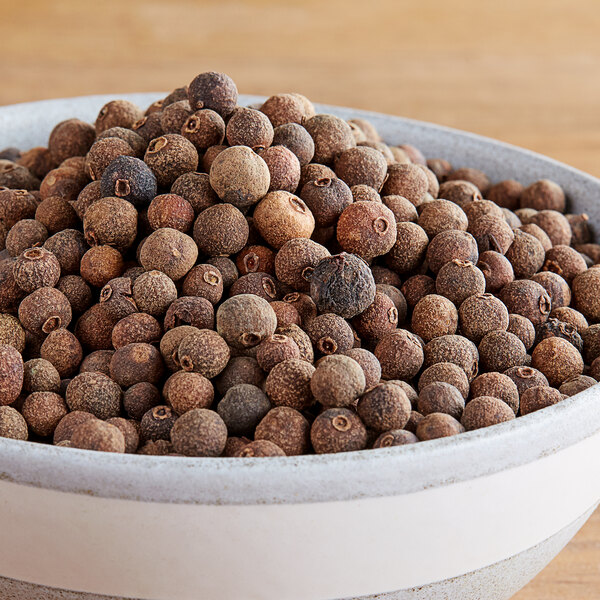
Although the name might suggest this spice is made of a mixture of spices, allspice is actually derived from the dried, unripe berry of a tropical evergreen tree native to Central and South America. Allspice gets its name because many people have described the spice's aroma as a blend of cinnamon, nutmeg, ginger, and cloves. The earlier it is added to the cooking process, the bolder the flavor.
- Color: red-brown
- Aroma: sweet, warm, woody, and spicy
- Taste: pungent, spicy-sweet, and warming
- Application: used to spice up pies, cakes, muffins, and other baked goods, can be used in marinades, pickling and mulling spices, soups, stews, and curry dishes
- Flavor Pairings: cinnamon, nutmeg, coriander, peppercorn, clove, rosemary
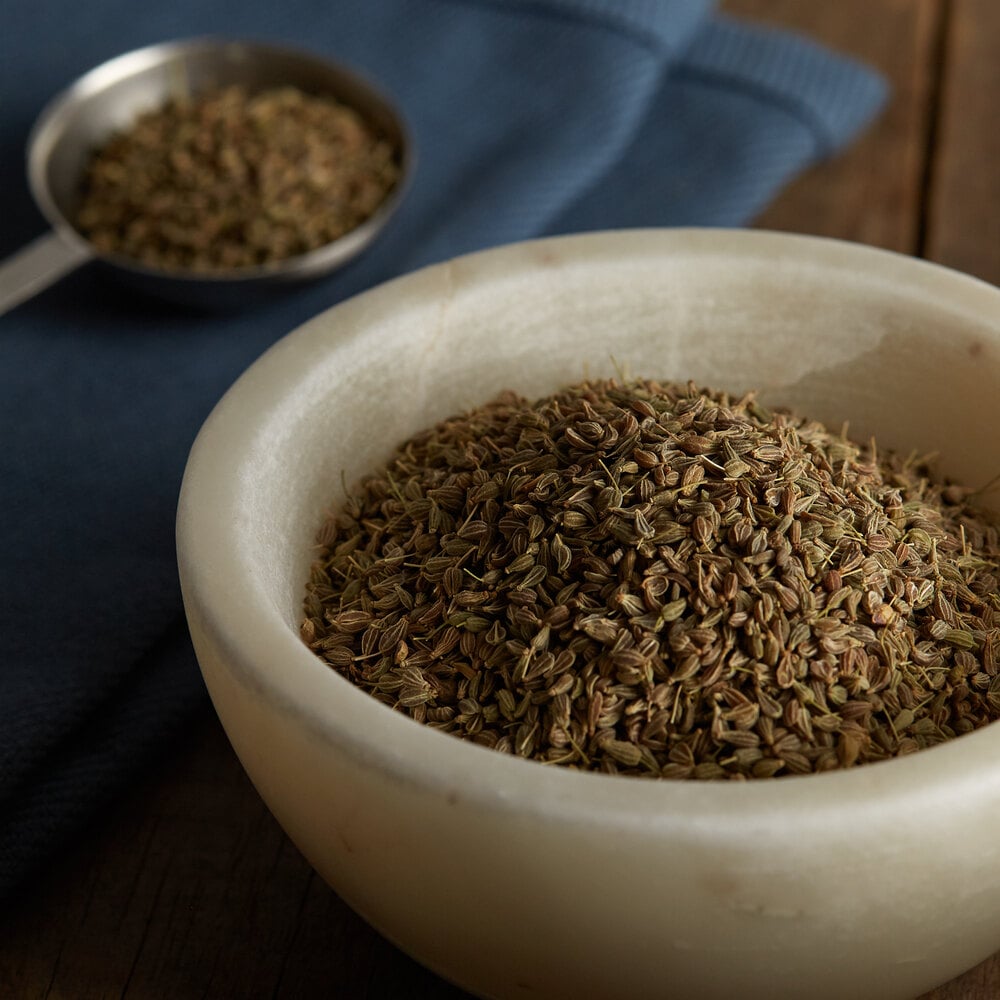
Anise, or aniseed, is derived from a flowering plant native to the Mediterranean region and is popularly used in Mediterranean, Indian, and Middle Eastern cuisine. Anise is not to be confused with star anise; star anise comes from a different plant and has a more pronounced licorice flavor.
- Color: light brown
- Aroma: licorice
- Taste: spicy and licorice-like
- Application: used to make cakes, confectionaries, biscuits, breads, and other baked goods as well as flavor liquors, sauces, sausages, soups, and stews
- Flavor Pairings: caraway, fennel, dill weed, coriander, tarragon, turmeric
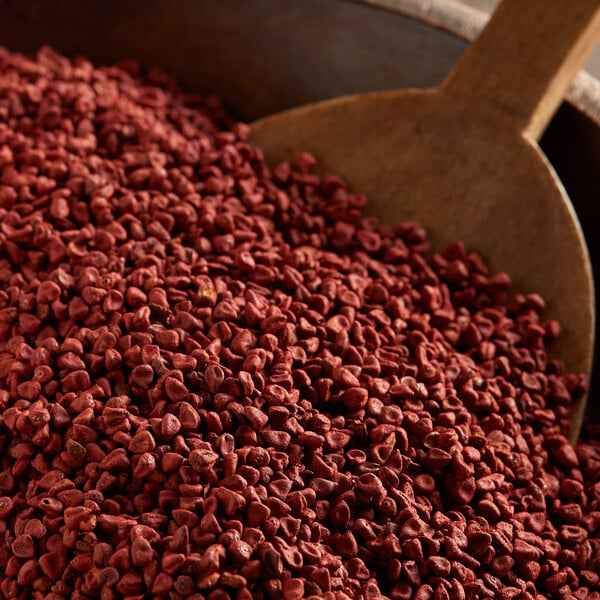
Annatto is a large, triangular-shaped seed that is derived from a tropical tree, which is native to South America and India. Common in Caribbean, Latin American, and Filipino cuisine, it has long been used for culinary and dyeing applications as well as preserving perishable foods. Additionally, annatto seed can be used as a cost-effective substitute for saffron's golden coloring; however, it is not a substitute for saffron's unique flavor.
- Color: brick red
- Aroma: slightly peppery and nutmeg-like
- Taste: zesty and slightly sweet
- Application: often used as a natural dye to impart an appealing yellow-orange color to cheeses, oils, rice, and sauces and adds flavor to soups, stews, and chowders
- Flavor Pairings: paprika, chili powder, cloves, allspice
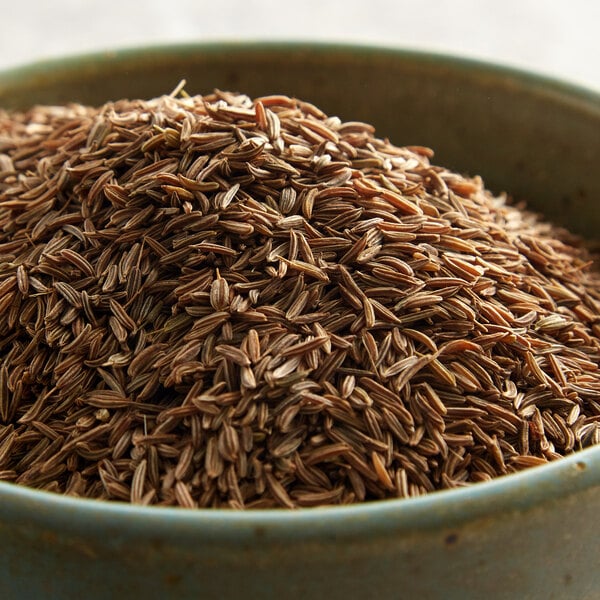
Caraway seed can be used for flavoring foods either whole or ground. They can be used in virtually any recipe, ranging from sweet to savory, to add an unexpected range of flavors. Add the seeds towards the end of cooking to avoid the bitterness that can result from lengthy simmering.
- Color: brown
- Aroma: warm and sweet
- Taste: nutty and bittersweet with hints of licorice, pepper, and citrus
- Application: used to flavor sauerkraut, coleslaw, soda bread, potato salad, cheeses, and breads
- Flavor Pairings: anise, fennel, coriander
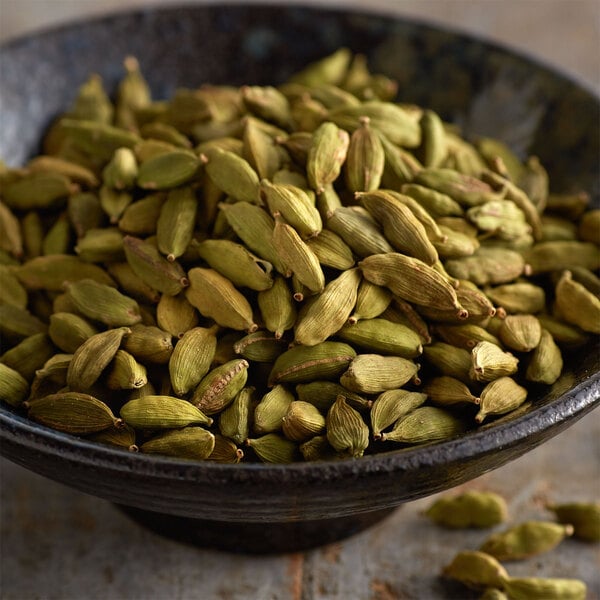
A popular ingredient in Indian cuisine, cardamom comes whole as green pods or ground as a tan powder. If you use the whole pods, lightly toast the seeds inside the pods for the fullest flavor before removing and grinding. The seeds from 5 pods will equal approximately 1/4 teaspoon ground.
- Color: light green or tan
- Aroma: pungent and warm
- Taste: warm and sweet with lemony undertones
- Application: used in baked goods, custards, puddings, chai tea, mulled wine, curries, pilaf, and other rice-based dishes as well as for seasoning meat, poultry, and seafood
- Flavor Pairings: cinnamon, clove, allspice, ginger, turmeric, nutmeg
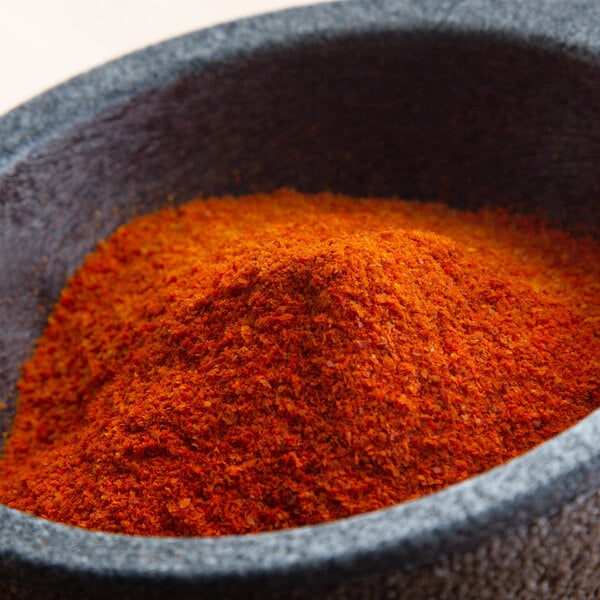
Cayenne pepper is made from dried and ground seeds and pods of various types of chile peppers. It should be used sparingly; season to taste until the desired level of heat is reached.
- Color: bright red-brown
- Aroma: spicy and earthy
- Taste: pungent and spicy with biting heat
- Application: adds a kick to sauces, condiments, stews, chilis, marinades, dry rubs, seafood dishes, egg dishes, meats, and vegetables
- Flavor Pairings: bay leaf, chili powder, curry, garlic, onion
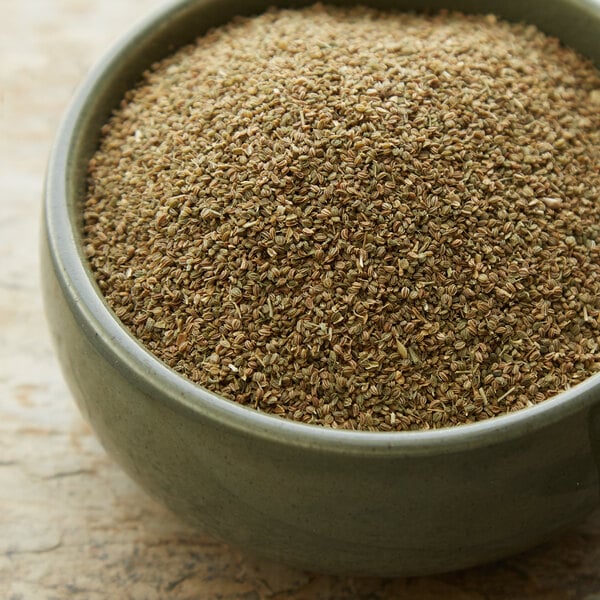
Celery seed is common in American and European dishes and can be added into recipes either whole or ground.
- Color: brown
- Aroma: spicy, earthy, and penetrating
- Taste: strong and warm with a lingering, slightly bitter taste
- Application: used for pickling brines or in coleslaw, potato salad, macaroni salad, deli meats, soups, stews, curries, and chutneys
- Flavor Pairings: cilantro, mustard, parsley, rosemary, thyme
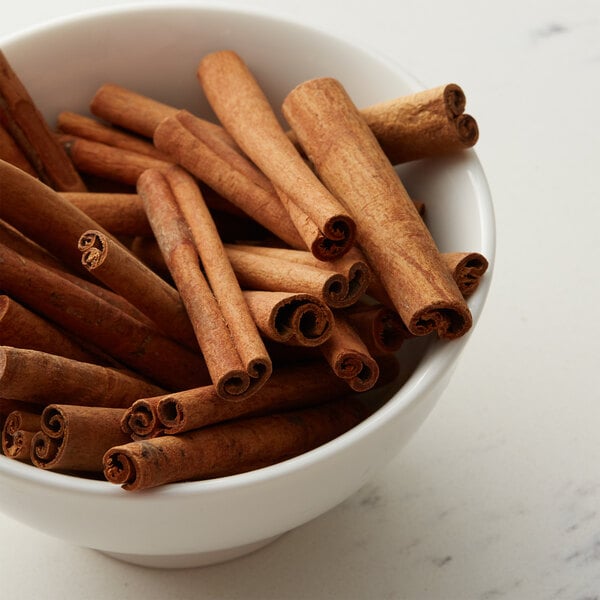
Cinnamon is derived from the dried inner bark of the tropical tree Cassia and is used in both sweet and savory dishes. Although cinnamon is more commonly used in ground form, the whole sticks can be stored for longer and then ground when needed for a more robust flavor.
- Color: red-brown
- Aroma: sweet and earthy
- Taste: warm, earthy, and subtly sweet
- Application: add to hot chocolate, cider, mulled wine, tea, cakes, cookies, muffins, and other desserts, curry dishes, roasts, stews, and chili, or use to garnish breakfast foods, puddings, and desserts
- Flavor Pairings: curry, allspice, nutmeg, ginger, coriander, turmeric

Cloves are derived from the dried, unopened flower of a tropical evergreen tree. They can easily overpower a recipe, especially when ground, so use sparingly. If substituting whole cloves for ground, use 3 whole cloves for 1/4 tsp. of ground cloves.
- Color: brown
- Aroma: pungent, warm, and sweet
- Taste: rich, earthy, and spicy-sweet
- Application: used in baked goods, hot beverages, sauces, soups, and stews as well as for studding ham and pork roasts for enhanced flavor and presentation
- Flavor Pairings: cinnamon, allspice, cardamom, ginger, nutmeg, curry
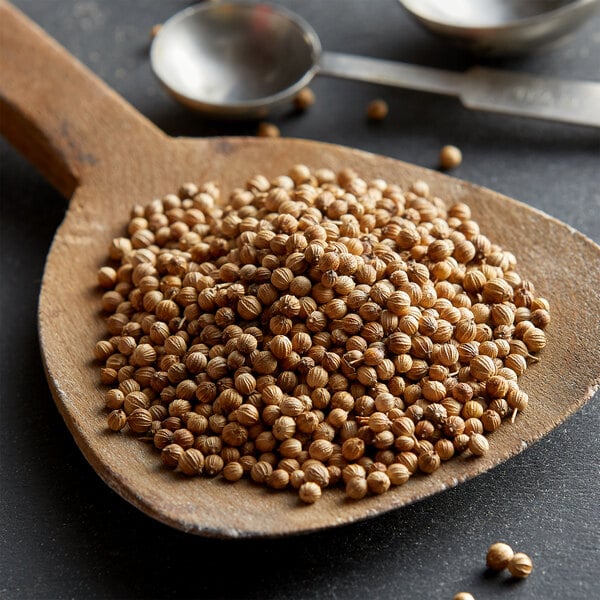
Coriander is derived from the ripe fruit of the cilantro plant. Although they are from the same plant, coriander and cilantro are not similar in taste and should not be used interchangeably. The seeds can be used whole or ground.
- Color: tan-brown
- Aroma: earthy and lemony
- Taste: warm, earthy, and lemony
- Application: used to season meats and beans, create meat rubs, taco seasonings, curry dishes, chili, and stews
- Flavor Pairings: curry, cumin, paprika, chili powder
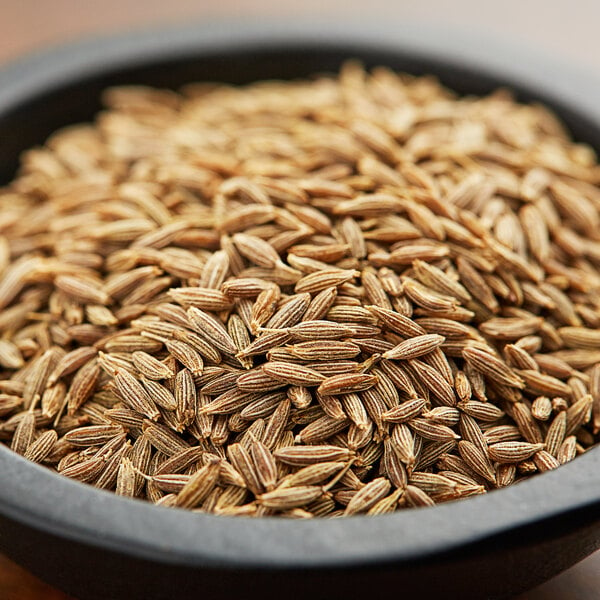
Cumin is popularly used in Middle Eastern, Indian, Latin American, and Spanish cuisine. Use sparingly, as it can overpower other flavors in a dish.
- Color: brown-green
- Aroma: warm and earthy
- Taste: earthy, spicy, and subtly sweet
- Application: adds depth or a kick to dressings, stews, sauces, marinades, dry rubs, beans, and smoked meats
- Flavor Pairings: bay leaf, chili powder, curry, garlic, onion
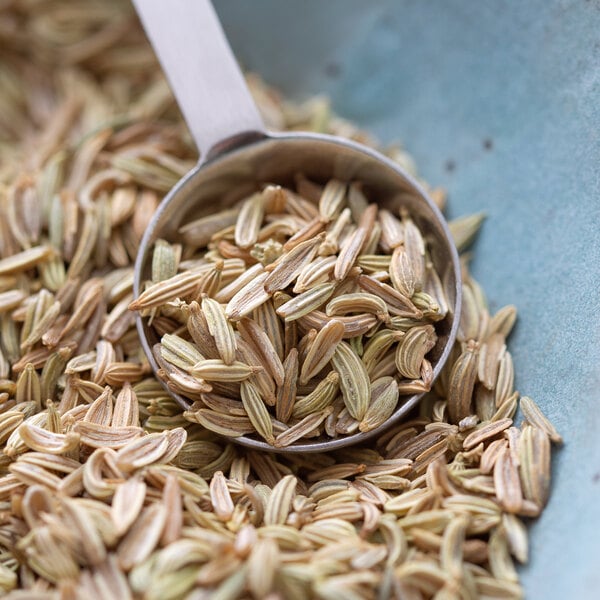
Fennel seed is derived from the dried fruit of the fennel plant, which is native to the Mediterranean region. It can be used in either whole or in ground form.
- Color: green-brown
- Aroma: licorice, similar to anise
- Taste: subtly sweet and licorice-like
- Application: used to flavor liquors and spirits, create fennel tea, season meats such as pork, spicy Italian sausages, meatballs, meatloaf, and salami, and in breads
- Flavor Pairings: mint, cilantro, dill weed, parsley, thyme, anise

Flaxseed is rich in fiber, healthy omega-3 fatty acids, and antioxidants, making it popular in health foods and beverages. It is typically ground before adding to meals to get the full nutritional benefit, as ground flaxseed, or flaxseed meal, is easier for the body to digest. If adding to a cooked grain dish, it is best to add flaxseed at the end of cooking since it can thicken liquids if they simmer too long.
- Color: brown
- Aroma: mild and nutty
- Taste: subtle, nutty taste
- Application: used in cereals, breads, and smoothies
- Flavor Pairings: garlic powder, paprika, sesame, fennel, cinnamon
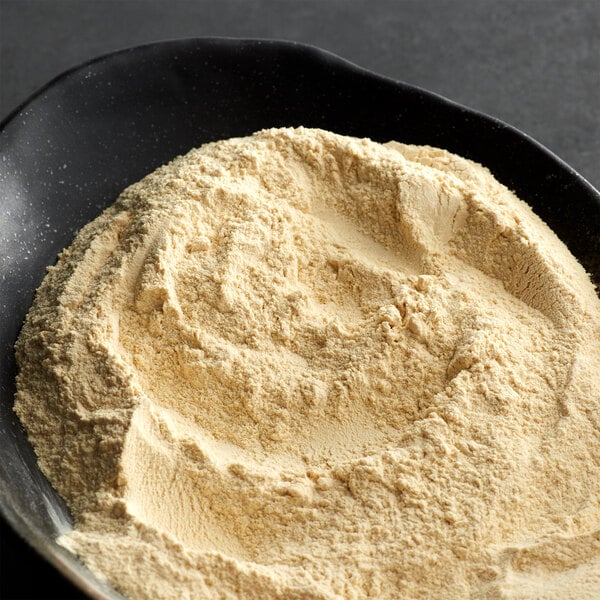
There are many alternatives to using fresh garlic in recipes, including granulated garlic and garlic powder. Typically, the choice of which garlic form to use comes down to what is available, how strong you'd like the garlic flavor to be, and if you want any added texture in your recipes. When using garlic, note that the more finely the cloves are chopped or ground, the stronger the flavor will be.
- Color: tan
- Aroma: pungent
- Taste: sharp and savory with a hint of sweetness
- Application: adds zest and depth to dressings, sauces, marinades, meat rubs, condiments, casseroles, and stir-fries
- Flavor Pairings: basil, rosemary, thyme, oregano, chili powder, coriander
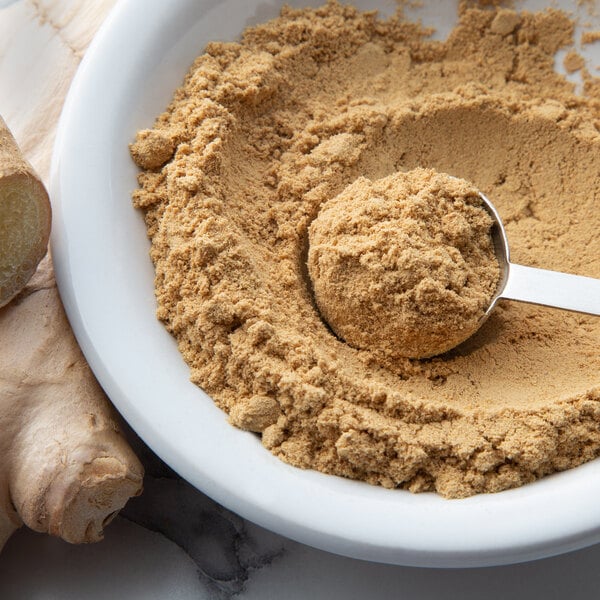
Ground ginger is made from dehydrated fresh-peeled ginger root that is then ground to a fine powder. It is an essential ingredient in many seasonal baked goods recipes.
- Color: pale yellow
- Aroma: pungent and spicy
- Taste: warm, zesty, and slightly sweet
- Application: used in baked goods, curries, stir fries, marinades, dressings, and meat rubs
- Flavor Pairings: allspice, coriander, cinnamon, cloves, nutmeg

There are three types of mustard seeds: yellow, brown, and black. The darker the seed, the spicier the flavor. The seeds can either be used whole or ground to make various types of prepared mustard and other recipes.
- Color: varies from pale yellow to black
- Taste: varies from mildly sharp to spicy
- Application: used to create pickling spices and season meats, vegetables, beans, sauces, marinades, condiments, and dressings
- Flavor Pairings: bay leaves, chili powder, dill weed, fennel, coriander

Derived from the nutmeg tree native to the Spice Islands, nutmeg is the hard oval seed inside the tree's yellow fruit. Mostly used in ground form, powdered nutmeg features a more concentrated flavor than whole. To substitute ground nutmeg for whole, use 2-3 teaspoons per whole nutmeg.
- Color: brown
- Aroma: sweet and nutty
- Taste: warm, zesty, and slightly sweet with earthy, nutty undertones
- Application: used in baked goods, custards, puddings, soups, stews, and cheese sauces or as a garnish for beverages, breakfast foods, and desserts
- Flavor Pairings: cinnamon, allspice, cardamom, ginger, coriander, mace, cloves

There are many alternatives to using fresh onion in recipes, including granulated onion and onion powder. Typically, the choice of which onion form to use comes down to what is available, how strong you'd like the onion flavor to be, and if you want any added texture in your recipes. Dehydrated onion forms are typically less potent than fresh onion in recipes.
- Color: off-white
- Aroma: nutty and earthy
- Taste: sharp and slightly sweet
- Application: adds depth to dressings, sauces, marinades, meat rubs, condiments, casseroles, and stir-fries
- Flavor Pairings: garlic, crushed red pepper, chili powder, coriander, parsley

Paprika is typically divided into three types – sweet (basic paprika), hot, and smoked. Paprika is created by grinding dried pepper into a powder and it varies in flavor, heat levels, and color depending on the type of peppers used to make it.
- Color: bright red to red-brown
- Taste: mild and sweet, spicy, or smokey and earthy
- Application: adds depth or a kick to dressings, sauces, marinades, meat rubs, seafood, and vegetables, also commonly used as a garnish for soups
- Flavor Pairings: garlic, rosemary, thyme, parsley, turmeric
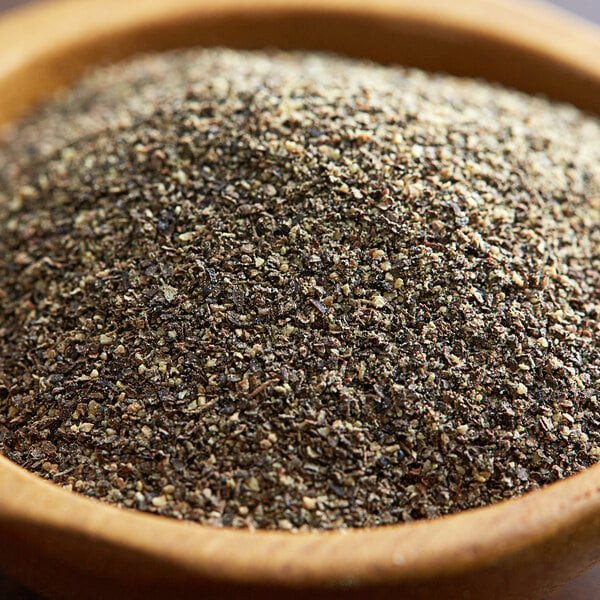
Peppercorns are berries grown on trees in tropical regions of the world. Their flavor and color greatly depend on the time of harvest, ranging from pink and fruity to green and tart to black and spicy. Whole peppercorns produce optimum potency when ground just before use.
- Color: white, black, green, or pink
- Taste: ranges from mild to strong and pungent
- Application: used for garnishing, seasoning meats and vegetables, and as an ingredient in sauces, dressings, and marinades
- Flavor Pairings: virtually any spice

Poppy seeds can be used whole or ground, but whole seeds should always be lightly toasted before adding them to uncooked foods such as salads to strengthen their flavor and aroma.
- Color: blue-black
- Aroma: mildly sweet
- Taste: sweet and nutty with slightly spicy notes when heated
- Application: used in bagels, breads, muffins, buns, pretzels, noodle dishes, seafood dishes, or as a garnish on salads
- Flavor Pairings: sesame seeds, mustard, curry

Available in many forms, salt is obtained from one of two different sources: mining or evaporating from seawater. Salt suppresses bitter flavors and can enhance sweet, sour, and savory flavors. Its flavor will not evaporate or dissipate during cooking, so it should be added to food carefully.
- Color: ranges from white to black
- Taste: savory
- Application: used for garnishing, seasoning meats and vegetables, and as an ingredient in sauces, dressings, and marinades
- Flavor Pairings: virtually any spice
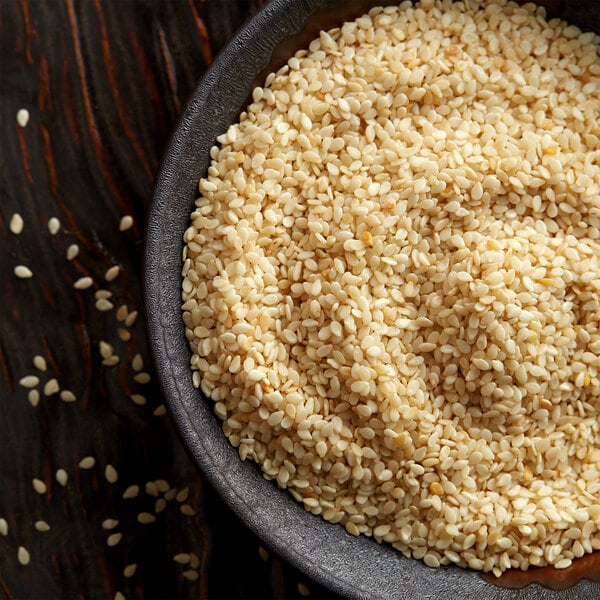
Sesame seeds come in two colors: white and black. Black sesame seeds are unhulled and richer in flavor while white sesame seeds are hulled and slightly milder. The two can be used interchangeably in recipes, but generally black is recommended for lighter dishes to provide visual contrast as well as with dishes with stronger spices since their white counterpart may be overpowered.
- Color: black or white
- Aroma: nutty and earthy
- Taste: nutty
- Application: used in breads, crackers, and cakes, stir fries and noodle dishes, hummus, sushi, and other seafood dishes
- Flavor Pairings: cardamom, nutmeg, thyme, cloves

Star anise is derived from the dried, unripe fruit of a small tree native to China and is popular in Asian cuisine. It can be added to recipes whole, crushed, or ground and should be used sparingly as just a little is needed to bring flavor to an entire dish. If cooked whole, the pods should not be eaten; however, they can still add a decorative accent to your dish.
- Color: red-brown
- Aroma: licorice
- Taste: bittersweet licorice
- Application: used to flavor sauces, soups, stocks, teas, liquor, and mulled wine as well as cakes, cookies, pies
- Flavor Pairings: cinnamon, fennel, coriander, tarragon, cloves

Native to India and southern Indonesia, turmeric is derived from the root of a perennial plant in the ginger family. Turmeric is almost always used in powdered form, which allows it to easily disperse in any recipe and impart its distinguishing color throughout the dish. Turmeric also has natural anti-inflammatory properties and is a popular ingredient in many health foods and beverages.
- Color: bright yellow
- Aroma: earthy
- Taste: warm and earthy with slightly bitter notes
- Application: used in curry powders, mustards, and relishes, to season vegetables, lamb, beef, seafood, and make wellness shots and juices
- Flavor Pairings: anise, fennel, pepper, coriander, nutmeg, cloves
The loss of moisture in dried herbs strengthens and concentrates their flavor, so you should slightly alter recipes when replacing fresh herbs with dried herbs. While fresh herbs are best to use when finishing a dish, dried herbs need time to release their essential oils and flavors and are most effective when added during the cooking process. For most dried herbs, use 1/4 to 1/3 the amount that is called for fresh herbs.
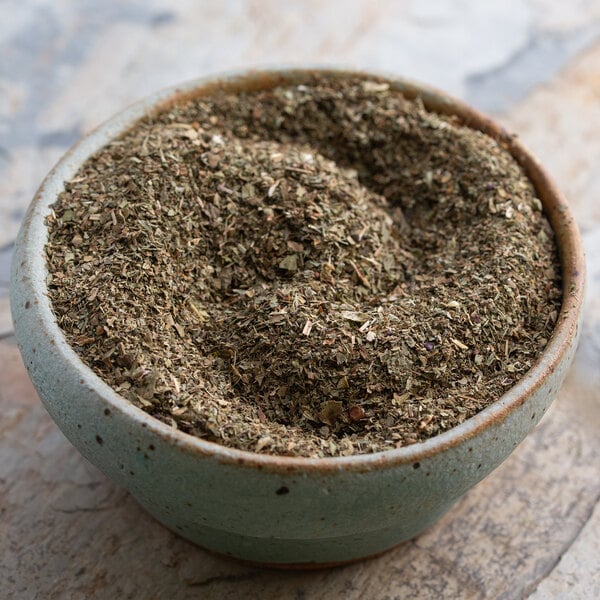
Dried basil has a more assertive flavor than fresh basil and is best when added to the end of cooking because prolonged heat will deteriorate its distinct flavors. It is commonly used in Italian, Mediterranean, Thai, Vietnamese, and American cuisine.
- Color: green
- Aroma: peppery and minty with hints of citrus
- Taste: sweet, slightly minty, and peppery taste
- Application: used to create dry rubs for red meats, poultry, and seafood dishes as well as in sauces, soups, stews, and pasta dishes
- Flavor Pairings: garlic, rosemary, thyme, oregano
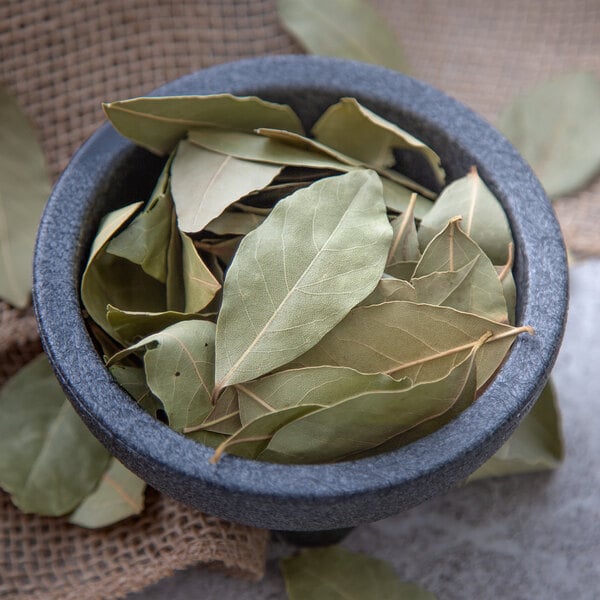
Bay leaf is one of the few herbs to reach its peak flavor and aroma when dried rather than fresh. Bay leaves are typically added whole during the cooking process and removed before eating.
- Color: olive green
- Aroma: herbal
- Taste: earthy, menthol flavor with a slight bitterness
- Application: adds depth of flavor to soups, stews, and braises, ingredient in pickling brines, and is one of three main components in the Bouquet Garni seasoning blend
- Flavor Pairings: sage, marjoram, thyme, oregano
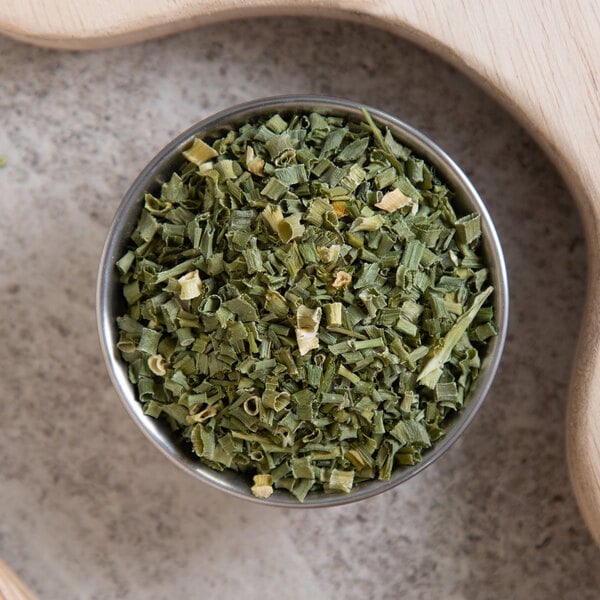
Chives are the smallest members of the onion family. Add chives at the end of or after cooking as they lose their delicate flavor with long exposures to heat.
- Color: green
- Aroma: mild, onion-like
- Taste: mellow, more delicate flavor than onions or scallions
- Application: used in egg-, cheese-, and cream-based dishes, soups, stews, chowders, stir-fries, sauces, and dips or as a garnish for both mashed and baked potatoes, salads, and finished meals
- Flavor Pairings: parsley, tarragon, chervil, garlic

Cilantro comes from the leaves of the coriander plant; however, it is not interchangeable with coriander spice. It is a commonly used herb in Latin American, Caribbean, and Asian cuisines and it should be used sparingly as the pungent flavor can sometimes be overpowering.
- Color: green
- Aroma: earthy, citrusy
- Taste: herbaceous, piney flavor with notes of anise, citrus, mint, and pepper
- Application: used in bean dips or purees, bread, chutneys, rice, salsa, soups, and tagines
- Flavor Pairings: lime, onion, chile pepper, cumin, garlic

Dill weed is from the leaf and stem of the dill plant. While deriving from the same plant, dill weed is very different from dill seed and the two should never be substituted for each other. Dill weed should be used sparingly in most applications because its flavor increases with time.
- Color: green
- Aroma: anise-like with citrus notes
- Taste: piney flavor with notes of anise, citrus, mint, and pepper
- Application: used in fish dishes, yogurt- or sour cream-based dips and sauces, mayonnaise-based salads, and deviled eggs
- Flavor Pairings: mustard, horseradish, basil, garlic
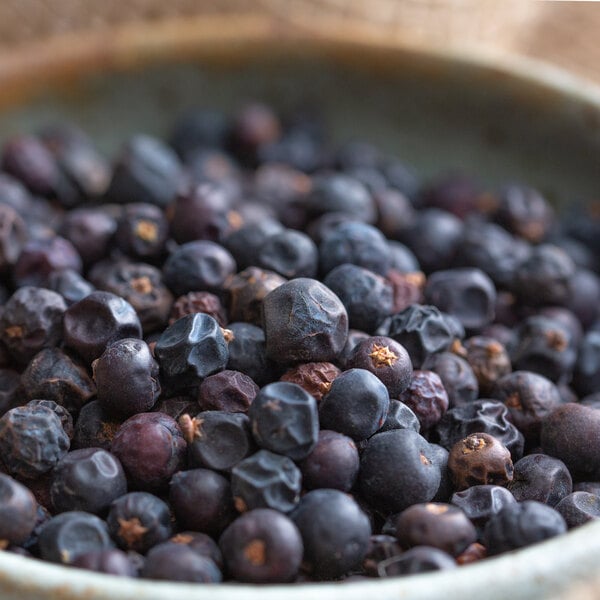
Juniper berries are not actually classified as berries but are in fact female seed-cones from the juniper plant. Because juniper berries are very powerful, as few as 3-4 berries can be used to add flavor to an entire recipe.
- Color: blue-black
- Aroma: flowery and fragrant
- Taste: sharp and piney with a slightly citrusy, bittersweet taste
- Application: used to season game meat, flavor liquor, and create marinades, sauces, and brines
- Flavor Pairings: bay leaf, rosemary, marjoram, garlic, caraway, thyme

A close cousin of the oregano family, the perennial marjoram herb is a cold-sensitive plant that originated in the Mediterranean. Marjoram works well in many recipes which call for oregano, although it yields a more delicately sweet and slightly minty flavor. Because of its delicate flavor, it should be added towards the end of cooking.
- Color: light green with a slight gray hue
- Aroma: warm and earthy
- Taste: woody, bitter, and slightly minty with floral, citrus, and pepper notes
- Application: used in salad dressings, marinades, soups, sauces, and sausages, also a main component in the Bouquet Garni and the Fines Herbes seasoning blends
- Flavor Pairings: basil, thyme, rosemary, parsley, fennel seed
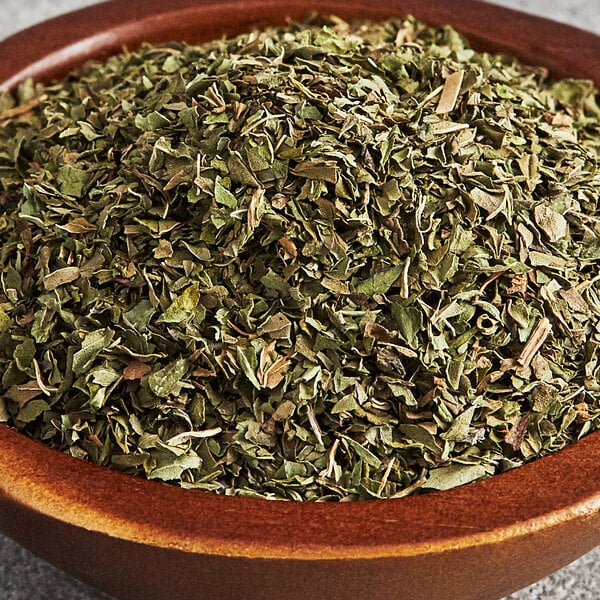
Mint is an incredibly flexible herb that works well in both sweet and savory dishes and can be used to complement and mellow the flavors of acidic foods. It is very common in Middle Eastern, Turkish, Greek, and Indian cuisines. It holds onto its flavor well, so it can be added during the early stages of the cooking process.
- Color: deep green
- Aroma: pungent and fresh
- Taste: menthol-forward flavor with cool, sweet notes
- Application: used to make herbal teas, mint sauces, jellies, and chutneys, season meats, salads, roasted vegetables, and stews, and is a key ingredient in yogurt sauces
- Flavor Pairings: basil, thyme, tarragon, dill weed, fennel seed, and coriander
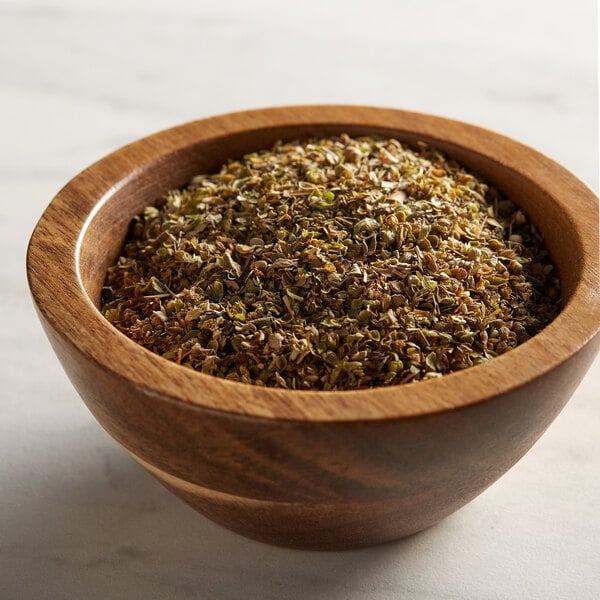
There are many different types and varieties of oregano that are defined by where they are cultivated in the world, some of the most popular types in the U.S. being Greek, Italian, and Mexican oregano. It can be used as a substitute for marjoram in dishes where a bolder, zestier flavor is desired.
- Color: green
- Aroma: warm and earthy
- Taste: earthy, sharp, and slightly bitter with notes of pepper
- Application: used in tomato-based sauces, marinades, dressings, and egg- or cheese-based dishes, common garnish on sandwiches, pasta, and pizza
- Flavor Pairings: chili powder, basil, marjoram, fennel seed, parsley, thyme
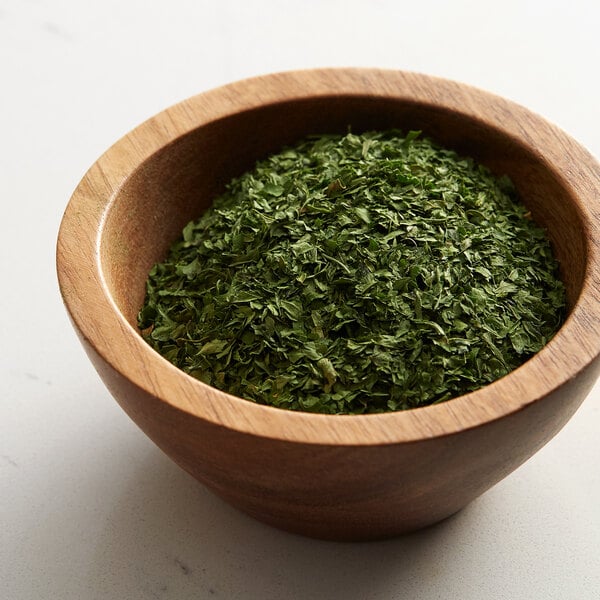
Dried parsley is slightly more muted in flavor than its fresh counterpart, which is why it is commonly used as a last-minute garnishing to add texture and color to your favorite recipes. Dried parsley is also great for slow cooking as it can handle long cooking times without losing its flavor.
- Color: deep green
- Aroma: bright and herbal
- Taste: clean and grassy with warm, earthy notes and a faint bitterness
- Application: used to make herbed butter, cheese, and aioli, for flavoring and/or garnishing sauces, soups, and salads, and is a main component in the traditional Bouquet Garni blend
- Flavor Pairings: bay leaf, rosemary, marjoram, garlic, dill weed, thyme

Rosemary is derived from a small evergreen shrub in the mint family. Dried rosemary should be used sparingly to avoid overpowering the dish due to its pungent flavor and it can stand up to long cooking times.
- Color: pale green
- Aroma: Piney with eucalyptus notes
- Taste: warm and woodsy with notes of lemon, pine, and mint
- Application: used to season meats, sauces, and soups, baked into crackers and bread, and an essential ingredient in the traditional Bouquet Garni and Herbes de Provence seasoning blends
- Flavor Pairings: oregano, basil, sage, parsley, thyme, mint
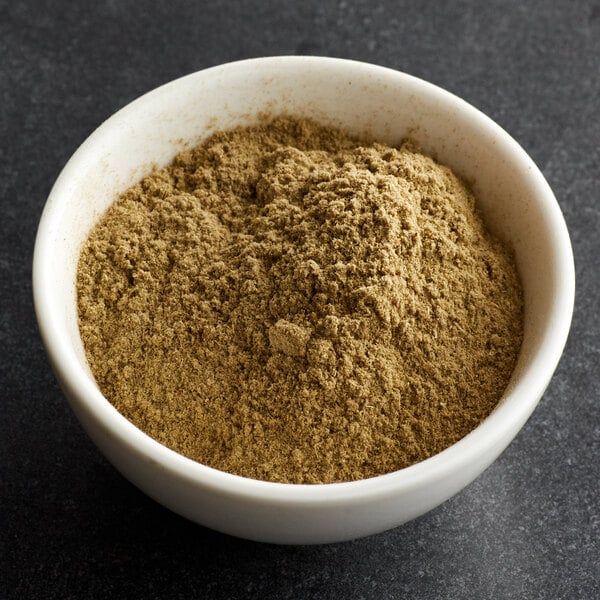
Native to the Mediterranean region, sage is derived from a low-growing evergreen shrub. Ground sage has a more assertive flavor than rubbed sage, making it a better option for recipes where you’re looking for its woody flavor to shine through.
- Color: gray-green
- Aroma: pungent and earthy
- Taste: herbaceous and savory with hints of peppermint and pine
- Application: used to season poultry, pork, duck, goose, lamb, stuffing, soups, and roasted potatoes, frequently used to preserve and flavor sausages
- Flavor Pairings: celery seed, smoked paprika, thyme, rosemary, marjoram

Tarragon should be used sparingly as its pungency may overwhelm other flavors in the dish. It should also be added later in cooking because it may turn bitter with prolonged exposure to heat. Crush the leaves before adding them to your recipes to release their full range of flavors.
- Color: deep green
- Aroma: licorice, similar to anise
- Taste: earthy and bittersweet with notes of licorice and mint
- Application: used to season poultry, pork, lamb, game, seafood, sauces, vinegar, dressings, oils, and herbed mayonnaise recipes
- Flavor Pairings: chives, rosemary, parsley, thyme, mustard seed, anise

Thyme is derived from a perennial herb in the mint family. Dried thyme has a more pronounced flavor than its fresh counterpart, making it especially great for bold, spicy foods and meats. Because of its robust flavor, thyme can easily overpower a dish, so it should be used sparingly.
- Color: green-brown
- Aroma: warm and earthy
- Taste: sharp and piney with a hint of mint and pepper
- Application: used to season meat, fish, eggs, and vegetable dishes, create compound butter and soups, and as an ingredient in soups, stews, and dressings
- Flavor Pairings: basil, rosemary, marjoram, garlic, onion, parsley
Dry spice blends offer versatility and shortened preparation time. While some spice blends can be easy to make yourself, purchasing pre-made blends ensures that you consistently have the same ratio of ingredients. They can also present a low-risk and cost-effective way to develop new and trendy global flavors for your menu! Below are some popular spice blends you can use to elevate your foods.
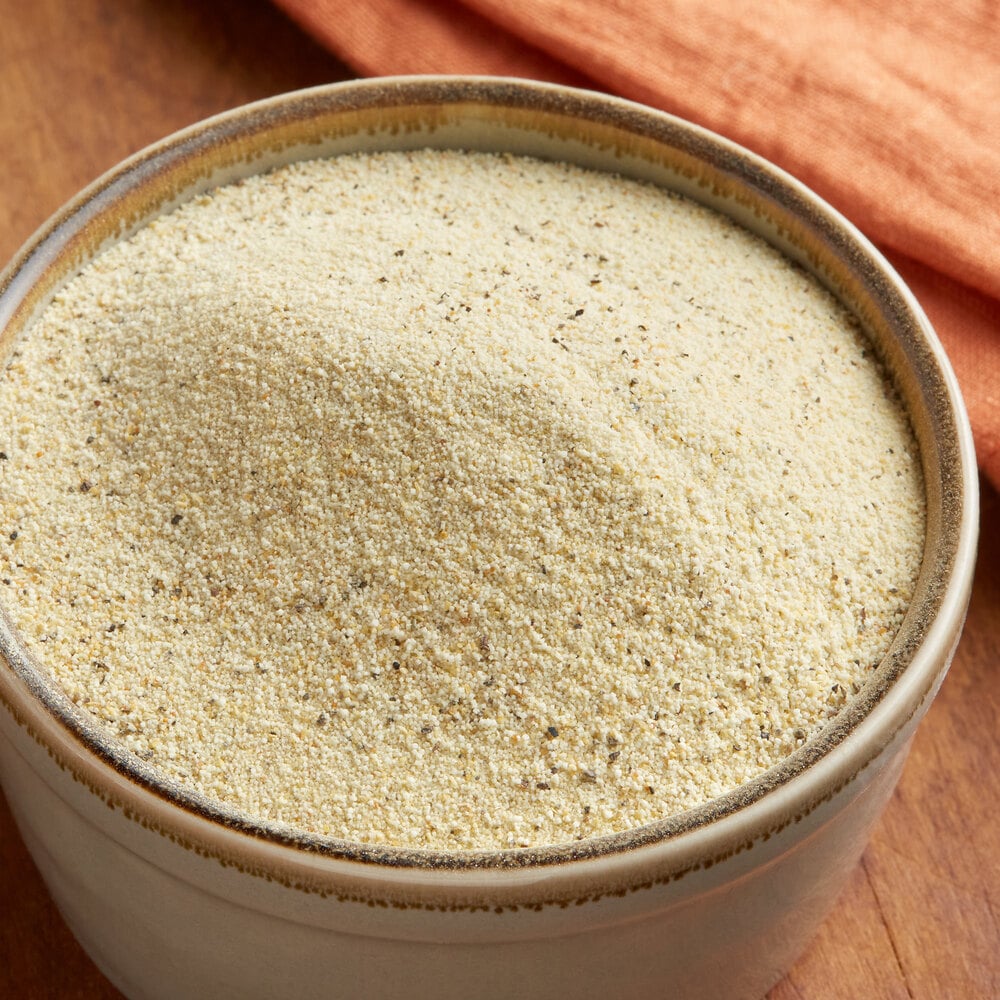
Adobo
Adobo seasoning is a popular spice blend used in Spanish, Caribbean, and Latin American cuisine. It combines garlic powder, salt, black pepper, and oregano as well as other savory seasonings.
- Color: yellow
- Taste: spicy and savory
- Application: used to create dry rubs and marinades for meats, season vegetables, and as a base for stews and sauces

Chili powder is a popular spice blend in Mexican, Indian, and Southwestern cuisines. Includes a blend of ground chile peppers with other spices like cayenne, cumin, oregano, paprika, garlic powder, and salt. The heat level is varied based on the brand but is typically within the range of mild to medium spicy.
- Color: red-brown
- Aroma: warm and earthy
- Taste: earthy, spicy
- Application: used to season meats, chili, stews, soups, sauces, and casseroles
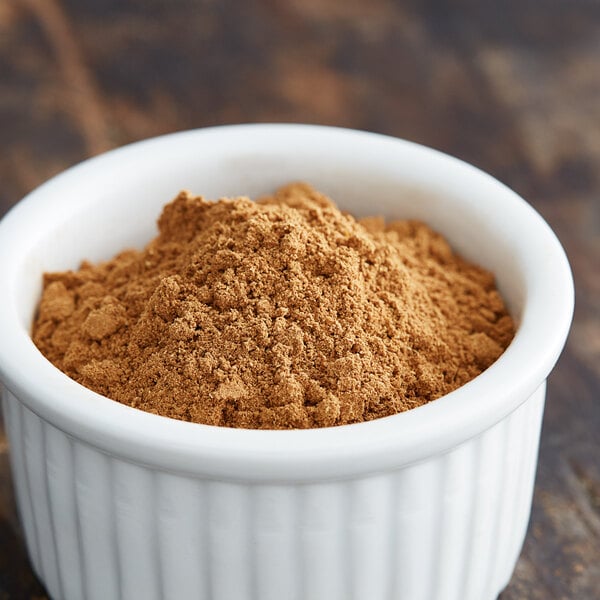
Chinese five spice powder is an exotic spice blend that highlights the five flavors of Chinese cuisine: sweet, salty, bitter, sour, and spicy. It combines Szechuan peppercorns, star anise, cassia or cinnamon, fennel, and clove.
- Color: brown-orange
- Taste: warm, licorice forward-flavor with complex cool, peppery notes
- Application: used to season meats like duck, pork, and beef and as an ingredient in dry rubs, marinades, soups

Most known for its use in Indian cuisines, curry is a fragrant spice blend composed of coriander, turmeric, cloves, pepper, garlic, cumin, salt, allspice, and mustard. Adding curry powder early in cooking allows the complete range of flavors to fully disperse.
- Color: golden
- Taste: warm, spicy, savory
- Application: curry dishes, stir fries, chicken salads, and seasoning meats
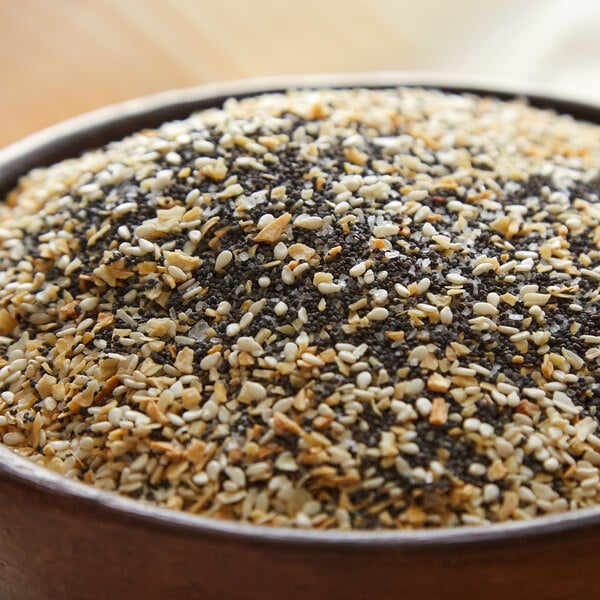
Everything bagel seasoning combines toasted sesame seeds, poppy seeds, garlic, onion, and salt into one savory blend.
- Taste: toasty and savory
- Application: added to bagels, breads, hummus, soft pretzels, eggs, and roasted meats

Jerk is a style of cooking native to Jamaica. It includes a multitude of spices that can vary from recipe to recipe, but some of the main components are salt, cayenne pepper, cumin, smoked paprika, cinnamon, garlic powder, onion powder, and thyme.
- Color: orange-brown
- Taste: complex, zesty, and slightly sweet
- Application: used to create dry rubs and marinades for grilled meats and chicken wings and as an ingredient in stews, soups, and bean-based dishes

Pickling spice typically includes a blend of whole and chopped herbs like bay leaf, mustard seeds, black peppercorns, allspice, juniper berries, and coriander.
- Aroma: earthy
- Taste: warm with hints of zesty heat
- Application: pickling vegetables, making brines to cure meats, and creating savory marinades for slow-cooked meats
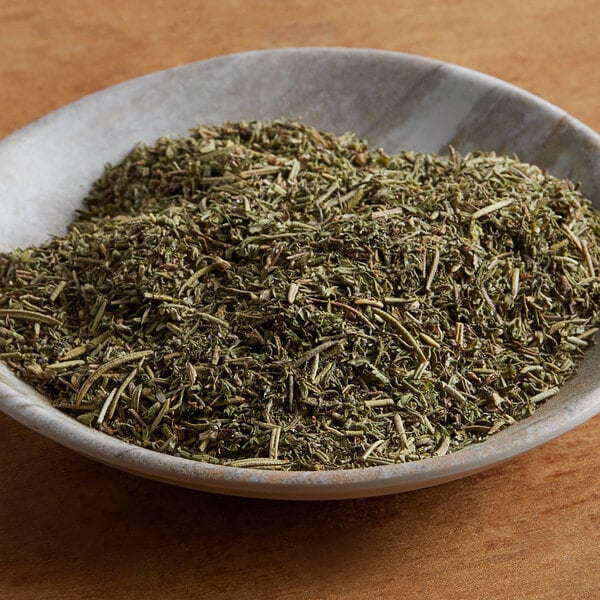
Poultry seasoning is a fresh, savory herb blend typically comprised of thyme, sage, marjoram, rosemary, pepper, and nutmeg.
- Color: green
- Taste: herbaceous, earthy, savory
- Application: used to season poultry, fish, pork, stuffing, pot pies, casseroles, and soups
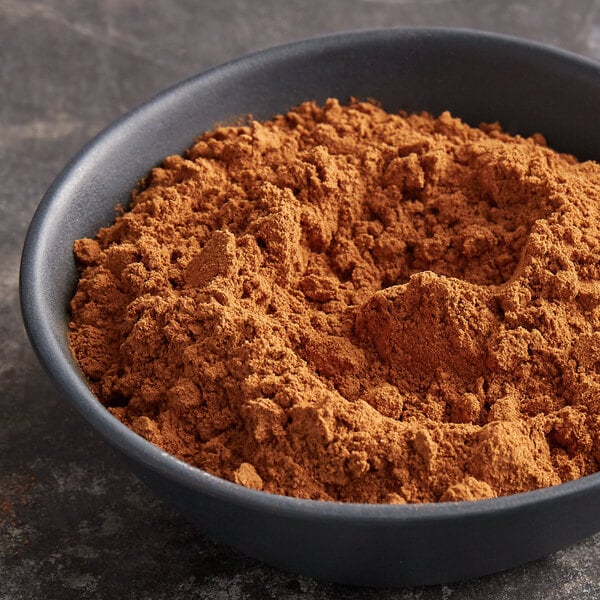
Pumpkin pie spice is a blend of cinnamon, ginger, nutmeg, allspice, and cloves. Named for its original use in the classic fall pie, pumpkin pie spice is now a popular blend for many seasonal culinary applications.
- Color: orange-brown
- Aroma: warming, earthy, and sweet
- Taste: warm, sweet, and zesty
- Application: used to flavor hot and cold beverages, pie filling and other baked goods, and frozen treats
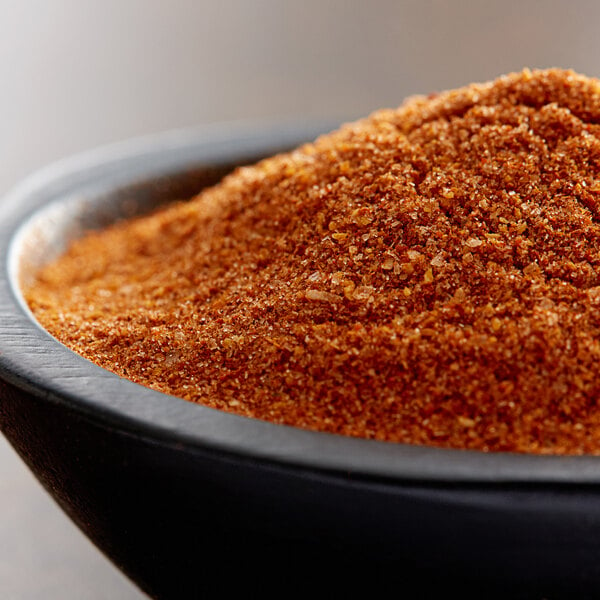
Sazon typically includes a blend of annatto, coriander, cumin, garlic, MSG, paprika, and salt. It is a versatile blend that can be added to your recipes before or after cooking.
- Color: orange
- Aroma: warm and earthy
- Taste: zesty and savory
- Application: used to season meats or as an ingredient in dry rubs, marinades, and soups
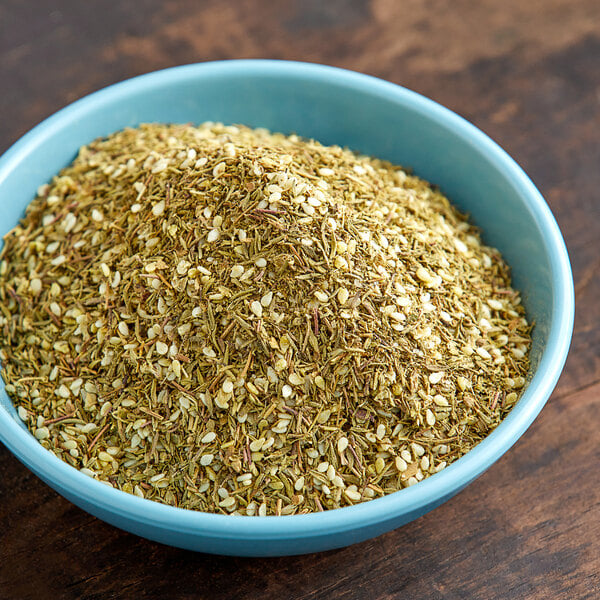
Za’atar is a popular Middle Eastern spice blend that varies greatly based on the region it is made in, though it generally contains a combination of oregano, thyme, sumac, toasted sesame seeds, and salt.
- Color: yellow
- Taste: zesty and herbaceous
- Application: used to season meats, vegetables, flatbreads, labneh, and falafel
We answer common questions about herbs and spices below:
What Is the Difference Between Herbs and Spices?
Spices come from the non-leafy part of a plant, including the root, stem, seed, fruit, flower, or bark of the tree or plant, while herbs typically come from the green, leafy part.
How are Dried Herbs and Spices Stored?
Properly storing your spices can help ensure a fresher, more potent flavor throughout their lifetime. Both whole and ground herbs and spices should be stored in airtight containers in a cool, dark place away from direct heat.
Is it Better to Purchase Whole or Pre-Ground Spices?
Purchasing either whole or ground spices usually comes down to convenience. While freshly-ground spices are more flavorful and aromatic than pre-ground spices, they require some prep time, whereas pre-ground spices come ready to use. Whole ground spices also have a longer shelf life because the oils that release flavor and aroma have not yet been disturbed.
How Do You Use Whole Spices?
Whole spices are easy to grind with the right tools. You can use either a spice grinder or a mortar and pestle to grind whole spices. To get the best flavor from your whole spices before grinding, toast them in a dry skillet over low heat until they start to become fragrant. Only toast one spice at a time as they have different cook times.
Related Resources

January 2025 WebstaurantStore Coupon Code
The holiday season is over, and to ring in the new year and combat the post-holiday blues, you can find amazing deals on important items here at WebstaurantStore all January long! From essential coffee service equipment to ingredients and supplies for your favorite winter recipes, we have a slew of great deals to warm you up this cold season! Check out our selection of sale items below and don't forget to enter the code FROSTY26 at checkout to enjoy 10% off your purchases! Looking to save even more? Check out the new Webstaurant Rewards® Visa Business Card ! Sign up for a new card today and start earning rewards on every WebstaurantStore purchase, and save on a WebstaurantPlus subscription. Explore incredible deals on winter disposable item

Spice Blends You Can Make Yourself
Spice blends add delicious flavor to many of your favorite foods, but instead of paying top dollar for spice mixtures, it's easy to make your own. You can save money by mixing your own DIY spice mixes from bulk spices. For commercial kitchens that use large quantities of spice blends, blending your own seasonings from whole or ground spices is an economical option. Check out the recipes below for popular spice blends. Shop All Bulk Spices Spice Mix Materials To make your own copycat spice blends, first collect the following materials: Dry ingredient measuring cups and spoons Small kitchen funnel Medium-size mixing bowl Glass jar or spice container Spice grinder (optional) Add the spices to a mixing bowl and stir together to blend. Once the

Best Spice Blends
By using pre-mixed spice blends, chefs can save time and effort in measuring and combining individual herbs and spices , ensuring consistency in flavor profiles across dishes. These blends simplify inventory management and storage, as they require less shelf space compared to individual spices, and they help reduce overall food costs by eliminating multiple spice purchases. We've rounded up the top ten most universal spice blends you should stock in your commercial kitchen for your most foundational cooking needs. Shop All Spice Blends Learn about the most popular spice blends: 1. Furikake 2. Garam Masala 3. Adobo 4. Italian Seasoning 5. Everything Bagel Seasoning 6. Za'atar 7. Curry Powder 8. Chili Powder 9. Herbs de Provence 10. Chinese F

